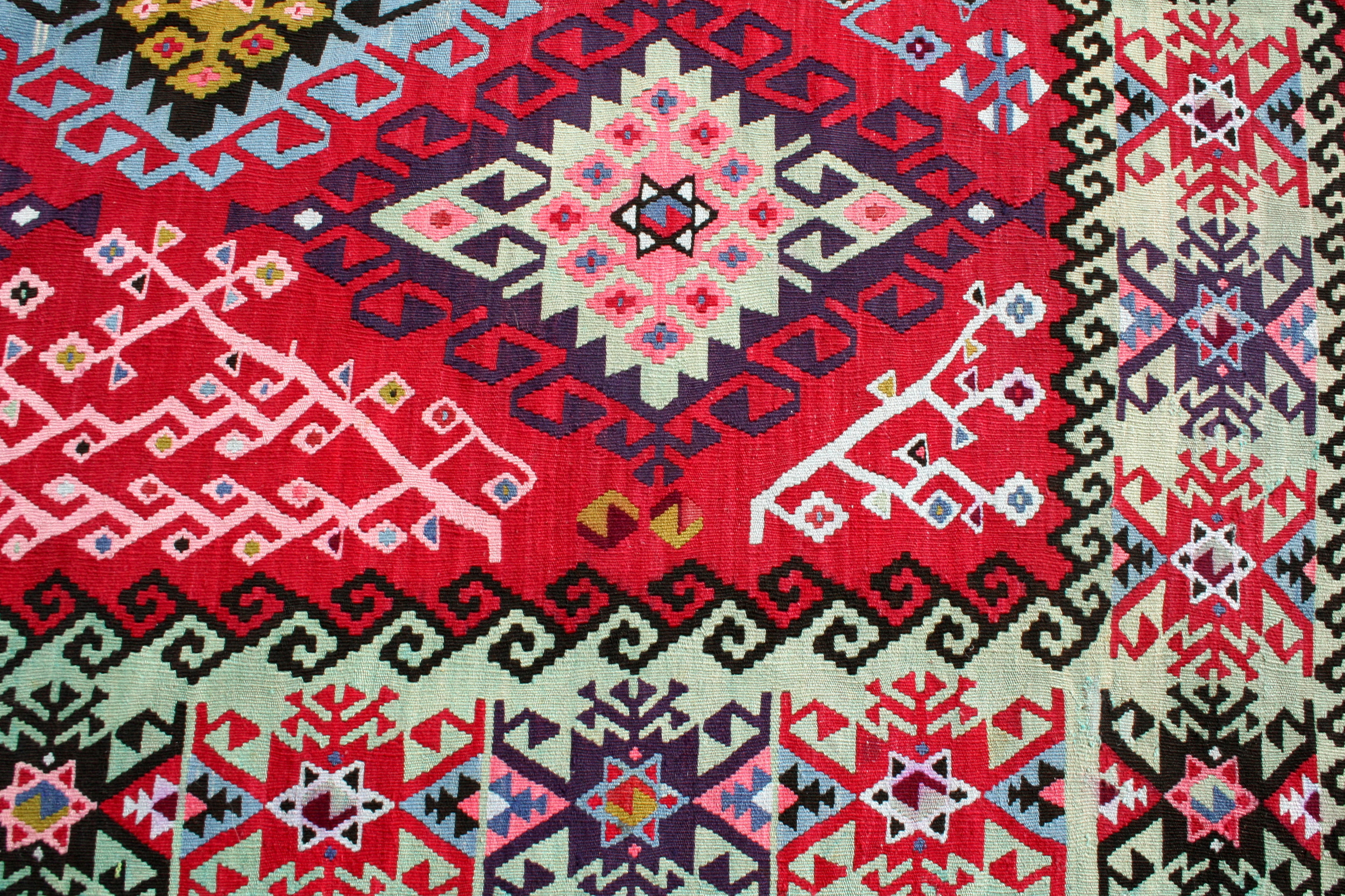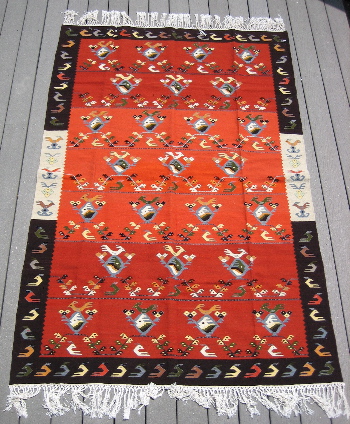Our kilim rugs, notable for their brilliant colors and markedly diverse patterns, are handwoven in Bulgaria. The new kilims, which often use some cotton yarn in the base for durability, are made of wool that is produced in Kyustendil and colored with either natural dyes or English dyes. Our increasingly rare antique kilims are made entirely of wool and colored with natural dyes. The art pieces are scattered with motifs, symbols, totems and patterns -- some representative of the weaver’s natural environment, some whimsical designs unique to the artist, and some traditional and ancient motifs.
Kilims were originally produced by nomadic peoples, especially those with their own sheep herds who had their primary raw material close at hand. Using traditional designs, they made the kilims primarily for their own use. Because the kilims can be folded, they were easily transportable when the herd needed to move. The weavers and their families used the kilims as their tables, as bed covers, and as body wraps when it became cold. They hung them inside their tents for insulation and for color, or hung them over the doorways to their shelters.
When rugs from the region became popular in the West in the mid-19th century, pile rugs or tufted rugs were more sought after than the flat-woven kilims. Westerners liked the feel of softer, Persian-style rugs on their feet. One story circulating in the Balkans is that kilims were once used as wrapping – as burlap is used now – for the pile rugs shipped to the West. In many ways, kilims’ unpopularity served the craft well, allowing for the maintenance of the traditional patterns. Whereas pile rugs tried to keep up with modern trends, altering patterns to please contemporary tastes, the kilims continued to be made in the ancient motifs, so the art was not lost or watered down. The rugs are designated by their names and by the region from which they came (for example, Traditional Chiprovski “Zelki”). Created in the Balkan regions of Chiprovtzi, Kotel, Pirot, and Anatolia, the kilims are listed with the traditional adjective-making suffix “ski.” Chiprovtzi and Kotel are towns in Bulgaria, Anatolia is now in Turkey, and Pirot is now in Serbia.
Exceedingly durable, these kilims should last for several generations. Some of our antiques already are 80 to 150 years old and still maintain their color and texture. Kilims can be placed over carpets or on hardwood, tile, or linoleum floors, and also can be used as wall hangings or drapings over couches and chairs. Whenever placed over floor surfaces, rugs should have a rubberized pad beneath them to protect both the rug and the floor surface, and to keep them from scooting.


